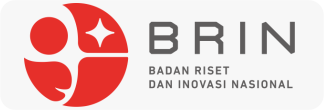Penciptaan Prototipe Locomotif Dari Barang Bekas Menjadi Karya Seni Bernilai Ekonomis
DOI:
https://doi.org/10.37802/candrarupa.v1i1.33Keywords:
Artworks, Locomotive Prototype, Creative IndustryAbstract
This research is the creation of works of art that have an orientation for creative-based industries, in this study more focused on the process of creating artworks by responding to used materials in the environment around us by prioritizing aesthetic values ​​in the artwork, the works produced are not only limited to decoration or functional only but also contains content that has a purpose and a specific purpose from its creator which among other things is also capable of growing the value of the creative economy.
References
Anggraini, Nenny, 2008. “Industri Kreatif�, Jurnal ekonomi Desember 2008 Volume XIII No. 3 hal. 144-151.
Budiman, K. 2004. Semiotika Visual. Yogyakarta: Penerbit Buku Baik.
Chernyshevsky, N. G. 2005. Hubungan Estetika Seni dengan Realitas. Bandung: Ultimus.
Herbert Edward Read, 1975, The Meaning of Art, Terjemahan Soedarso SP, STSRI “ASRI� Yogyakarta,
Haryono, Timbul. 2009. Seni Dalam Dimensi Bentuk, Ruang, dan Waktu. Jakarta: Wedatama Widya Sastra.
Howard, Roy Z. 2000. Pengantar Teori-teori Pemahaman Kotemporer: Hermeneutika, Wacana Analitik, Psikososial, dan Ontologis. Penerjemah: Kusmana dan MS. Nasrullah. Bandung: Nuansa.
Mikke Susanto, 2002. Diksi Rupa: Kumpulan Istilah-istilah dalam Seni Rupa. Yogyakarta, Kanisius, Nugroho, Puguh Setyo. 2008. �Analis Industri Kreatif�, Jurnal Ekonomi Desember.
Satria, Dias dan Ayu Prameswari. 2011. “Strategi Pengembangan Industri Kreatif untuk Meningkatkan Daya Saing Pelaku Ekonomi Lokal�. Jurnal Aplikasi Manajemen. Volume 9, Nomor 1. PP : 301-308.
The Liang Gie, 1978. Garis-garis Estetika (Filsafat Keindahan), Fakultas Filsafat Universitas Gajah Mada, Yogyakarta.
Budiman, K. 2004. Semiotika Visual. Yogyakarta: Penerbit Buku Baik.
Chernyshevsky, N. G. 2005. Hubungan Estetika Seni dengan Realitas. Bandung: Ultimus.
Herbert Edward Read, 1975, The Meaning of Art, Terjemahan Soedarso SP, STSRI “ASRI� Yogyakarta,
Haryono, Timbul. 2009. Seni Dalam Dimensi Bentuk, Ruang, dan Waktu. Jakarta: Wedatama Widya Sastra.
Howard, Roy Z. 2000. Pengantar Teori-teori Pemahaman Kotemporer: Hermeneutika, Wacana Analitik, Psikososial, dan Ontologis. Penerjemah: Kusmana dan MS. Nasrullah. Bandung: Nuansa.
Mikke Susanto, 2002. Diksi Rupa: Kumpulan Istilah-istilah dalam Seni Rupa. Yogyakarta, Kanisius, Nugroho, Puguh Setyo. 2008. �Analis Industri Kreatif�, Jurnal Ekonomi Desember.
Satria, Dias dan Ayu Prameswari. 2011. “Strategi Pengembangan Industri Kreatif untuk Meningkatkan Daya Saing Pelaku Ekonomi Lokal�. Jurnal Aplikasi Manajemen. Volume 9, Nomor 1. PP : 301-308.
The Liang Gie, 1978. Garis-garis Estetika (Filsafat Keindahan), Fakultas Filsafat Universitas Gajah Mada, Yogyakarta.


















